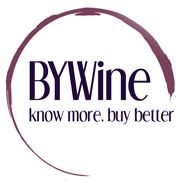A Bit of Bordeaux Blanc
Bordeaux is all about red wine. Claret. Médoc. St. Emillion. Expensive Crus Classés. But actually there is so much more to Bordeaux than that. 88% is indeed red wine but that means that 12% is not. There’s a titchy bit of rosé made and some of the best sweet white wines in the world come from the southern end of the Bordeaux region in Sauternes and Barsac. The remaining 9% is good quality, often truly great quality, dry white.
Sauvignon is the key to most Bordeaux Blanc, a grape variety we know and love from places such as New Zealand, and various areas in the Loire where indeed most Sauvignon is planted. But it is important in Bordeaux, too. Historically, white Bordeaux has been a wine blended from two, three or more varieties, and still, generally, the more serious are a mix of Sauvignon and Sémillon, but following the current trends and our drinking habits, many now are 100% Sauvignon Blanc. And importantly they label the wine as such so we know exactly what we’re getting.
 Or do we? Don’t expect a Bordeaux Sauvignon to deliver full-on in-your-face aromas and flavours of pungent asparagus or gooseberry as it does in New Zealand (you might also notice tropical fruit such as passion fruit or melon, or green pepper); you’re unlikely to get whiffs of smoke or gun flint as you might from a Californian Fumé Blanc or from Pouilly-Fumé. From Bordeaux, the wine is more grapefruit, cut grass and floral in character. Look out for Dourthe La Grande Cuvée from Waitrose at £8.99 which is lovely to drink on its own or with shellfish, white fish, chicken and salads. It’s not bad with asparagus either. Or goat’s cheese.
Or do we? Don’t expect a Bordeaux Sauvignon to deliver full-on in-your-face aromas and flavours of pungent asparagus or gooseberry as it does in New Zealand (you might also notice tropical fruit such as passion fruit or melon, or green pepper); you’re unlikely to get whiffs of smoke or gun flint as you might from a Californian Fumé Blanc or from Pouilly-Fumé. From Bordeaux, the wine is more grapefruit, cut grass and floral in character. Look out for Dourthe La Grande Cuvée from Waitrose at £8.99 which is lovely to drink on its own or with shellfish, white fish, chicken and salads. It’s not bad with asparagus either. Or goat’s cheese.
When Muscadelle is included to form part of the blend, as it often is in wines from Entre-Deux-Mers, the biggest region of Bordeaux, the wine is deliciously fruity making for perfect summer drinking and a great white for weddings because of its general all-round appeal. I’ve always loved Château Bonnet from the André Lurton stable, a great Bordeaux family. It’s around a tenner from Winedirect.
Sémillon is often added to Sauvignon, to give more weight and character, producing a wine designed for drinking with heavier foods and often gives the potential for age. Very often, too, Sauvignon Sémillon blends will have spent some time in oak barrels making for a richer, more complex style.
The grapes for many of these wines are grown on the left bank of the Garonne River, south of the city, in the superior appellations of Graves and the even classier, Pessac-Léognan. Look out for these names on the labels. Expect to have to pay a bit more, certainly over a tenner, but expect too to be rewarded with more complex flavours of baked apples, ginger, camomile, crème brulée, honey, candied fruit, vanilla…….the list goes on.
 Cards on the table, and you might have already guessed, I am a very big fan of Bordeaux Blanc wines in general but Pessac-Léognan wines in particular. One of my all-time favourites is Château Brown – not your everyday spend perhaps at £32 from Berry Brothers but worth every penny. The 2013 has been awarded an International Wine Challenge Gold Medal, and Trophy into the bargain. The Co-op sells a more affordable Graves, Clos Floridène, for £17 made by Denis Dubourdieu, hailed as one of the world’s best white wine makers. And, guess what, he comes from that great red wine-making region, Bordeaux.
Cards on the table, and you might have already guessed, I am a very big fan of Bordeaux Blanc wines in general but Pessac-Léognan wines in particular. One of my all-time favourites is Château Brown – not your everyday spend perhaps at £32 from Berry Brothers but worth every penny. The 2013 has been awarded an International Wine Challenge Gold Medal, and Trophy into the bargain. The Co-op sells a more affordable Graves, Clos Floridène, for £17 made by Denis Dubourdieu, hailed as one of the world’s best white wine makers. And, guess what, he comes from that great red wine-making region, Bordeaux.
